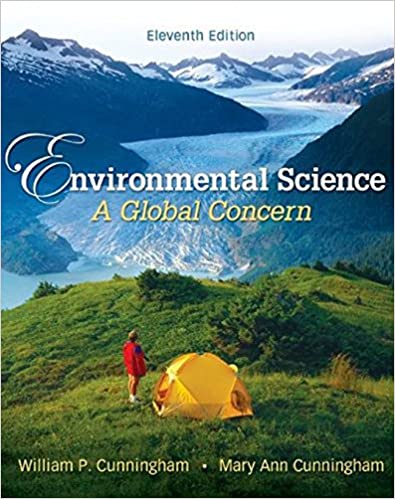
Environmental Science: A Global ConcernEnvironmental Science: A Global Concern 11th Edition by William Cunningham, Mary Ann Cunningham
Edition 11ISBN: 978-0697806451
Environmental Science: A Global ConcernEnvironmental Science: A Global Concern 11th Edition by William Cunningham, Mary Ann Cunningham
Edition 11ISBN: 978-0697806451 Exercise 20
Explain how water can enter and leave an aquifer (see fig.).

FIGURE
An aquifer is a porous or cracked layer of rock. Impervious rock layers (aquicludes) keep water within a confined aquifer. Pressure from uphill makes an artesian well flow freely. Pumping can create a cone of depression, which leaves shallower wells dry.

FIGURE
An aquifer is a porous or cracked layer of rock. Impervious rock layers (aquicludes) keep water within a confined aquifer. Pressure from uphill makes an artesian well flow freely. Pumping can create a cone of depression, which leaves shallower wells dry.
Explanation
Earth contains around 97% of saline wate...
Environmental Science: A Global ConcernEnvironmental Science: A Global Concern 11th Edition by William Cunningham, Mary Ann Cunningham
Why don’t you like this exercise?
Other Minimum 8 character and maximum 255 character
Character 255


